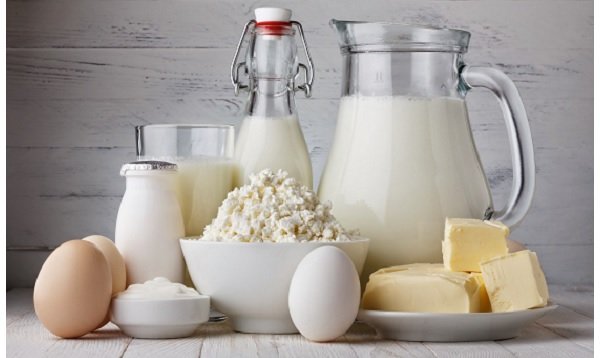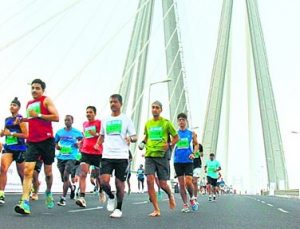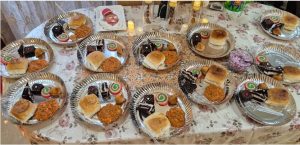
Dairy products are an important part of the diet in India; many Indians have been consuming it right from a young age. India also happens to be the world’s largest producer of milk. While milk, curd (yogurt), ghee, buttermilk, paneer are commonly consumed in India, cheese is a more recent discovery in India.
Vegan Cheese in India
Indian plant milk producer Goodmylk will soon be producing began cheese for the Indian market. Samples of the cheese product can be ordered from their website.
Indian monks using their European connections to meet rising demand for fresh, Italian-style cheese in India
India, Benedictine monks of the Vallombrosian Order (in Bangalore) are using their European connections to meet rising demand for fresh, Italian-style cheese in this South Asian country.
More and more Indians are falling in love with cheese, thanks to the popularity of Western lifestyle and cuisine in India. However, most cheese available in India, is actually imported which makes it expensive.
For more than a decade now, the Vallombrosians, who originated in Vallombrosa, a picturesque small Italian town not far from Florence, have been meeting this demand for fresh cheese, by producing a small but steady supply of Italian cheese in India.
Monasteries in Europe have been making their own cheese for centuries, and many regional specialties like Roquefort, Muenster and tête de moine (Monk’s Head) are traditionally monastic cheeses. “Back in Vallombrosa, the priests make table wines and herbal liqueurs, but we felt it wasn’t appropriate for India,” says the monk.
However, it never occurred to Father Michael to take up cheese-making in India, because cheese is not part of the mainstream Indian diet, until now.
The monks in Bangalore only realized the potential for cheese-making as a business, when an Italian businessman with ties in India complained to them that it was impossible to find good mozzarella in India, while pizza and pasta joints were aplenty in the big cities.
That was when Father Michael decided to venture into the business. He used his connections to import used machinery from Italy and traveled there to learn more about the art. After the monastery started producing cheese, he began to make cold calls to local restaurants, offering to send them samples, which included a small range of Italian cheeses like mozzarella, bocconcini, ricotta, burrata and mascarpone.
That was more than a decade ago. Today, Father Michael has a steady bank of upscale restaurants and luxury hotels as clients — not just in Bangalore, but also in Mumbai and Delhi. The monks have been fine-tuning their sales and distribution strategy over the years, and they prefer to sell to restaurants, because most Indians who do eat Western cuisine do so at restaurants. Only a small number experiment with cooking international dishes at home.
But indigenous cheese variants do exist, particularly in the Himalayan region, where communities produce small varieties of both soft and hard cheeses with the milk and buttermilk of sheep, yak, cow and dzomo (the hybrid of cow and yak).
“I discovered Vallombrosa cheese while dining at one of the restaurants at JW Marriott — which in India is a luxury brand — in Bangalore. The cheese was so fresh and tasty. I remember specifically asking the chef where I could find such good Italian cheese in India,” an expat in Bangalore, India.
The monks first started making cheese in Kottayam city in south India, but it was a complete failure due to the hot and humid climate there. Bangalore, which has a more moderate, cooler climate, turned out to be a better choice.
Finding unadulterated milk (key ingredient for cheese-making) in India is also an issue. After trying several suppliers, the monastery bought a herd of buffaloes, but even managing them was quite a hassle.
“We pay much more than the market price to ensure that our milk is free of adulterants. Even then, there have been times when the cheese simply does not set and we have to discard the product,” says Father Michael.
Not Everybody is a Fan Yet
Vallombrosa cheese may be the answer to the prayers of many cheese-loving Indians, expats and chefs seeking fresh, local products, but not everyone’s a fan.
“It was very hard to find good cheese when I started out, and to be honest, even now it is not easy. Hard and long-lasting cheeses are still being imported, but good quality fresh cheese is still a nightmare. I have only tried Father Michael’s burrata. Maybe it had traveled some distance, so unfortunately it was not very good,” says Delhi based Ritu Dalmia, a celebrity Indian chef who is famous for making Italian food more accessible to Indians through her restaurants, books and cooking shows.
And do the monks themselves ever get to enjoy the cheese they make?
They do, especially the left-overs. They have their Italian-style cheese with chapathi or Indian flat bread for breakfast.
Source: kazu








